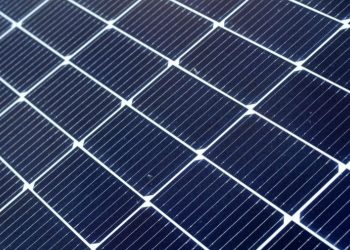Innovative Approach to Energy Harvesting Utilizes Non-Planar Dielectrics
by Simon Mansfield
Sydney, Australia (SPX) Nov 09, 2023
In an era striving for carbon sustainability and net-zero energy goals, a recent study introduces a novel method for environmental energy harvesting that simultaneously captures solar heat and raindrop energy more efficiently. This innovation, developed by Prof. Jiaqing He from the Southern University of Science and Technology and Prof. Ghim Wei Ho from the National University of Singapore, leverages non-planar dielectrics to significantly increase the output power of energy harvesters.
Energy harvesting has traditionally been weather-dependent, utilizing sources like solar illumination and raindrops, which vary with the climate and time of day. This variability presents challenges for consistent energy capture. Professors He and Ho’s research, published in the Beijing-based National Science Review, addresses these issues head-on.
Previously, energy capture from solar heat using pyroelectrics-a material that generates electric current when heated or cooled-was limited by the uniform thermal field propagation across devices. This resulted in low temporal temperature variation and polarization change. Additionally, planar surfaces were ineffective for harvesting energy from raindrops due to the static nature of the liquid-solid contact process required for triboelectric nanogenerators (TENGs), which generate electricity from friction.
To overcome these limitations, the team employed non-planar multi-layer dielectrics. These dielectrics, materials that support electrostatic fields without conducting electricity, exhibit a three-dimensional structure that confines local solar heat propagation and increases non-uniform spatial polarization. This structure enhances pyroelectricity and, due to its curved architecture and textured morphology, promotes water droplet spreading and separation, thus increasing the induced electrostatic charges and triboelectric output.
The results of the team’s experiments are significant. The non-planar generator, which uses widely available plastics such as fluoropolymer and Teflon, has demonstrated a 174.3% increase in solar heat energy harvesting and a 65.4% increase in raindrop energy harvesting output power, without consuming additional energies or altering the properties of the dielectrics. This marks a substantial improvement over traditional environmental heat and raindrop energy harvesters.
Beyond laboratory measurements, the research team also conducted outdoor in-situ tests in various weather conditions-sunny, cloudy, night, and rainy-to evaluate all-weather energy harvesting capabilities. These practical assessments further underline the potential of their approach for real-world applications.
In the context of renewable energy technologies, the study’s approach stands out for its simplicity and effectiveness. By not relying on complex alterations to the dielectric properties or the need for additional energy sources, the method exhibits a promising route for scalable and cost-effective environmental energy harvesting. This research could lead to advancements in high-entropy energy upcycling and inspire further innovation in the field.
Yi Zhou, one of the researchers involved in the study, remarks on the broader implications: “These results not only pave a new way for environmental heat/rain recovery but also for inspiration in other high-entropy energy upcycling.”
In conclusion, the study by Prof. He and Prof. Ho presents a promising new paradigm for energy harvesting. By optimizing the intrinsic properties of non-planar dielectrics, the researchers have unlocked a method to efficiently capture energy from both sun and rain, offering a dual-functional and enhanced approach to renewable energy capture. This development could have significant implications for the pursuit of sustainable energy solutions, especially in regions with variable weather conditions.
Research Report:Non-planar dielectrics derived thermal and electrostatic field inhomogeneity for boosted weather-adaptive energy harvesting
Related Links
Southern University of Science and Technology
All About Solar Energy at SolarDaily.com


















